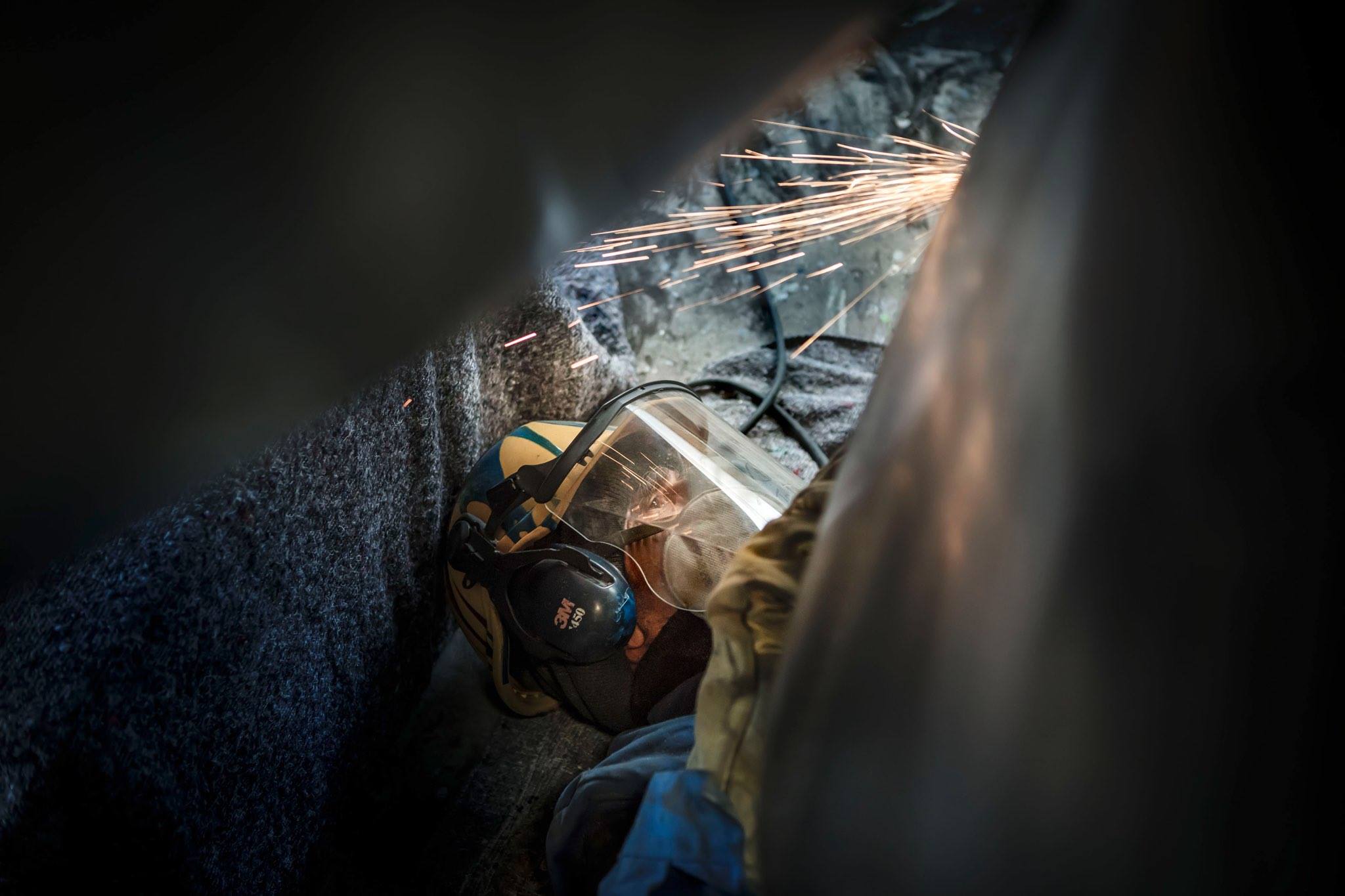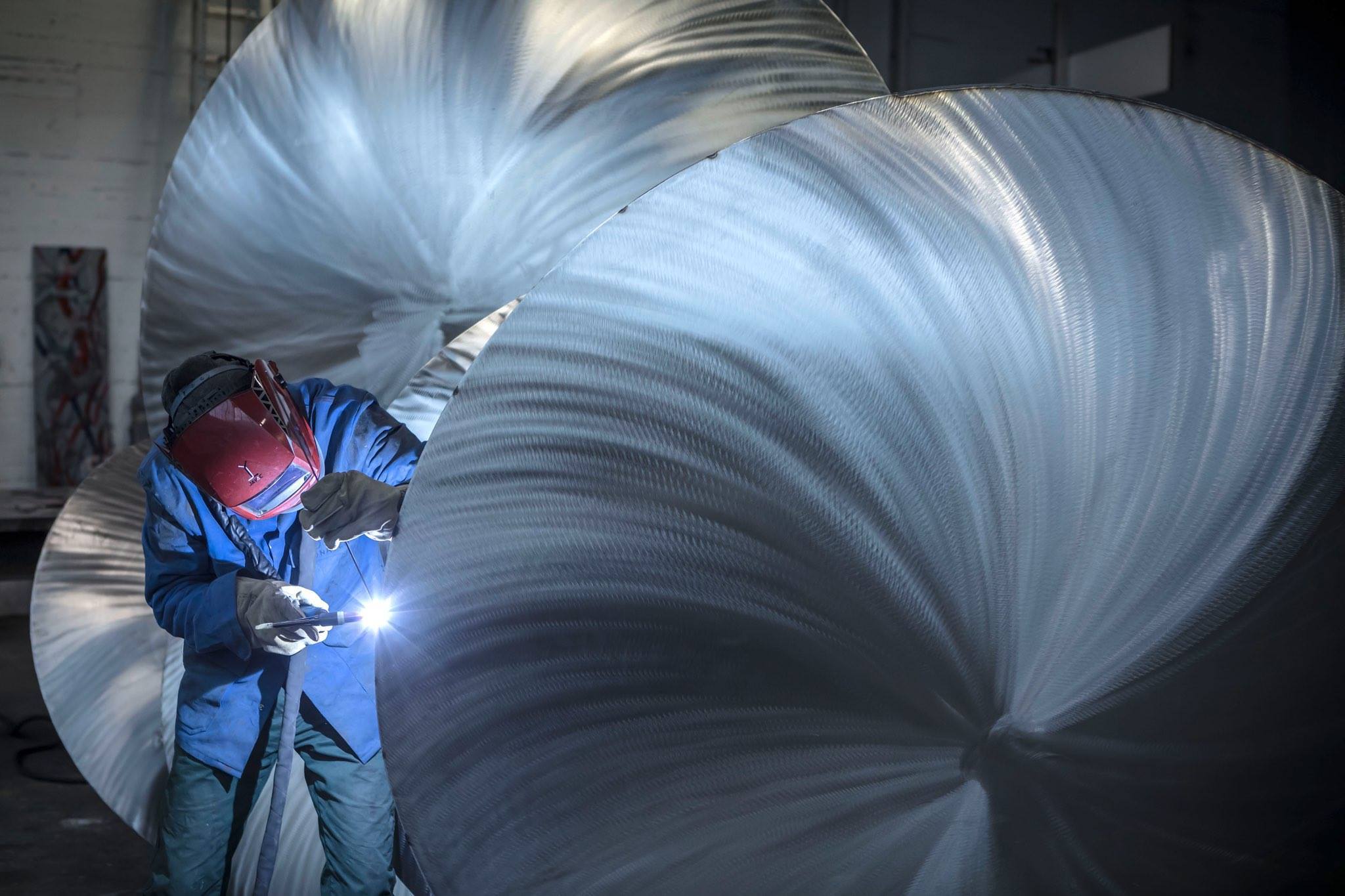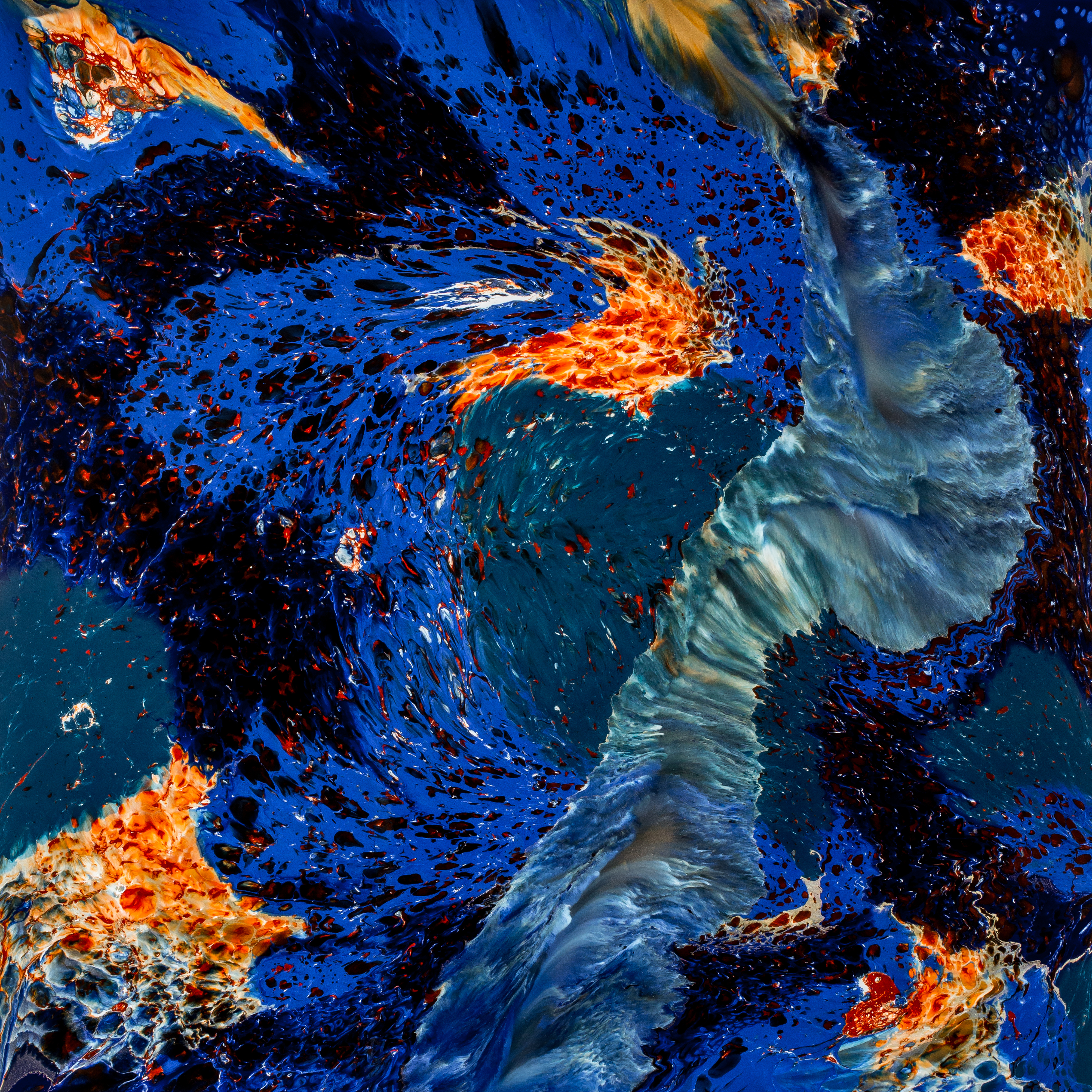
work
Generally one can say, that Thomas work is based on his distinct interest in philosophy and natural scientific research.
Many of his sculptures deal with fundamental philosophic topics and have been and are on the edge of technically realizable in order to suggest lightness although they are made out of steel/stainless steel and are pretty heavy indeed.
Therefore he collaborates a lot with engineers and technicians. Just recently he signed a collaboration contract of exclusivity with the RWTH Aachen, a german elite technical university. The purpose is the development of textile structured concrete sculptures, a completely new universe in the world of sculpture.
paintings
The same in his paintings – he has never been satisfied with the results based on traditional techniques such as water colors on paper and oil or acrylic on canvas etc. To achieve the illusion of 3-D on a 2-D surface he himself ,with the aid of specialists in the chemical or paint industry, developed his own ‘painting technique’ based on industrial adhesive systems. His remarkable interest in industrial processes opened the doors into the laboratories of adhesive world leader, the Düsseldorf based company Henkel.


This particular artistic approach is the reason why art critics, friends, colleagues, gallery owners, curators, marketing experts etc. started calling him the “engineering artist” which almost became his ‘second identity’ and put him in the focus of philosophers who research on the ambiguity of science and art.
Thomas cooperation with architects and landscape architects is another important field of work. He himself calls himself ‘man of space’ and that is true. And he inspires architects and landscape architects through his non-functional vision as well as he gets inspired by their more pragmatic approach.


Thomas work has never been ‘l’art pour l’art’. His public sculptures as well as his paintings have always been part of a context. Almost all of his sculptures are dedicated to the location, energy, particular ambience and people involved.
He recently mentioned during a lecture in Milan: “Artists are like chineses doctors – they search for the energy spots, interconnect them in order to generate even higher energy. Their sculptural interventions become acupuncture of the landscape”.
scenography concepts
Furthermore is his successful work distinctively based on his ability to think in concepts. Yes, he is sculptor and painter, but he also worked successfully on scenography concepts on bigger scale such as museum shows or industry promotions with a high creative impact.
No wonder that most recently he has been asked to create a memorial for the founder and owner of an important german industrial concern who has passed away in 2016. His sculpture-proposal has been realized and concentrates the industrialists main characteristics on a high abstract level. That’s the way he loves to work!


The same in his paintings – he has never been satisfied with the results based on traditional techniques such as water colors on paper and oil or acrylic on canvas etc. To achieve the illusion of 3-D on a 2-D surface he himself ,with the aid of specialists in the chemical or paint industry, developed his own ‘painting technique’ based on industrial adhesive systems. His remarkable interest in industrial processes opened the doors into the laboratories of adhesive world leader, the Düsseldorf based company Henkel.
This particular artistic approach is the reason why art critics, friends, colleagues, gallery owners, curators, marketing experts etc. started calling him the “engineering artist” which almost became his ‘second identity’ and put him in the focus of philosophers who research on the ambiguity of science and art.




